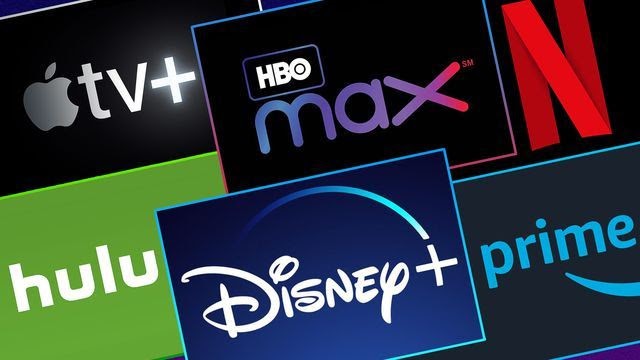Mobile TV: Do Wireless Carriers Have it Backwards?
Suddenly, as if it's the hottest new idea on the planet, mobile phone companies all over the world are announcing plans to enter the TV distribution business. Trials are underway, and mud fights are already starting over who has the best technology.
Even though most of these services will not launch in North America and Europe until the end of this year, mobile TV is already a hot media topic. The idea is simple: the pay TV model will be extended to allow users to watch video programming on their cell phones.
Am I dreaming, or is this another case of "been there, done that?" Broadcasters have been putting out mobile-friendly RF television signals for half a century. Electronics manufacturers like Casio and Sony have been selling micro-sized pocket TV receivers for at least two decades.
Sometimes--especially during emergencies or at sporting events--these little portable TVs actually come in handy, but most people never develop significant viewing habits on minuscule 1- or 2-inch diagonal screens. Common sense tells us why there has been no iPod mania here.
DESPARATELY SEEKING DOLLARS
This has not slowed the frenzy at the mobile phone companies, which are desperately seeking ways to generate new income from those expensive high-speed 3G networks they're building. All common sense aside, the mobile carriers--who seem to want to do anything except improve the basic reliability of their voice phone calls--are touting mobile TV like it's the hottest new technology to come along in years.
The program fare they are pushing includes custom-made micro-dramas, news clips, movie previews, music videos and whatever else they can find that's short and cheap. And, best of all: they want us to pay for it!
Having survived the dot.com era, I've developed a pretty good BS detector when it comes to the latest, greatest, newest technology that's supposedly going to change the world. And, yes, I do believe IP television will have an important future--but as a means to sell entertainment television over cell phones? Sorry, I don't think so.
Finally, after a long silence from those who should know better, I've found others who share my opinion. Last month, a new report from the research firm, Strategy Analytics, threw the first official cold water I've seen on the idea.
In a report titled "Mobile TV: Hype not Justified by Demand!," the researchers argued that the vendor-led rush to bring broadcast services to market misses the critical issue that there may be little demand for mobile TV.
Additionally, they found that poorly defined costs associated with infrastructure deployment will extend the return on investment for mobile broadcast networks beyond the currently envisaged two to four years.
Strategy Analytics, based in Newton, Mass., believes that the momentum behind mobile broadcasting is unfounded.
"Consumer demand for paid-for mobile TV remains highly uncertain, and we remain unconvinced that consumer appetite for mobile TV services exists outside of niche segments," said Phil Taylor, director of global wireless practice for Strategy Analytics. "Operators have the perfect opportunity in 3G to see if mobile video services will fly, without further extending themselves into the provision of broadcast services."
Just as with the blind enthusiasm that many dot.coms crashed and burned, the mobile operators seem to be deluding themselves on this one.
"Beyond the basic business case and potential cannibalization factors, mobile TV faces four key challenges," said David Kerr, vice president of Strategy Analytics.
Those four challenges are--the technology roadmap for mobile television is far from stable; regulation and low spectrum availability may slow the spread of services; adoption of media-enabled devices beyond the technophile segment is slow; and uncertain revenue models and value chain reconciliation will deter content industry participation.
In short, mobile TV, as a mass-market pay entertainment distribution medium, isn't ready for primetime. However, that doesn't mean there aren't some exciting possibilities for the reverse--sending TV images from cell phones for distribution to a mass audience.
As we've reported before, the BBC has led experiments using cell phone video from breaking-news events. Though the image quality is still quite low from most cell phones, the technology is improving dramatically. In the near future, a cell phone equipped with the latest generation CCD camera and a 3G broadband connection could send high-quality images to a broadcaster for use on the air.
In the meantime, video from cell phones is beginning to have an impact on blogging, the Web-based phenomenon that's caused a renaissance in personal publishing. The terms "vlog" (video log) and "moblog" (mobile log) are gaining popularity as creative publishers begin to add motion video and electronic still images to their text-based "blogs."
Moblogs are especially interesting, since these video-capable Web sites can be updated directly from the field by camera-equipped cell phone users. The implications this technology could have for newsgathering may be immense, allowing a reporter equipped with a mobile phone and small computer to create a Web-based information outlet from virtually anywhere.
Of course, not everyone is a reporter (or blogger), and the mobile operators don't see the same business opportunities for users who pay to send, rather than receive, video over their 3G networks.
But I'd bet the real killer app for mobile TV will come from the information creators, not the passive consumers of entertainment programming.
For additional information on the study cited in this column, go to www.strategyanalytics.com
The professional video industry's #1 source for news, trends and product and tech information. Sign up below.
Frank Beacham is an independent writer based in New York.

